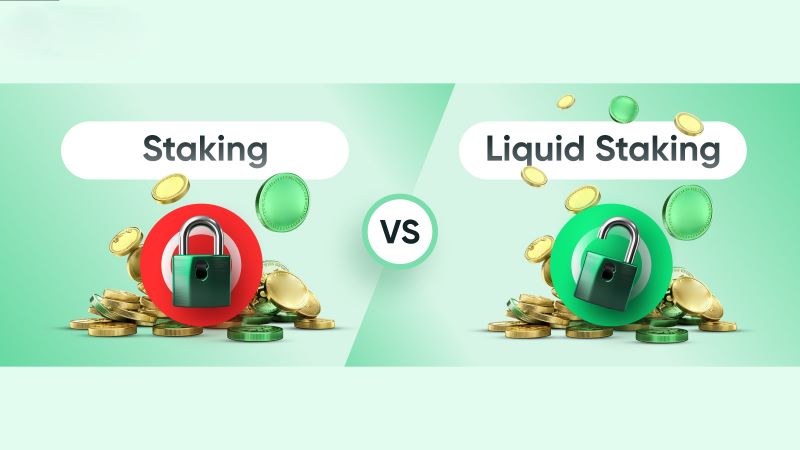Cryptocurrencies have introduced various ways for investors to participate in securing networks and earning rewards. Among the most popular methods are staking and liquid staking. While both serve to strengthen blockchain ecosystems, they operate in fundamentally different ways. Let’s explore what sets staking apart from liquid staking and how investors can benefit from each.
Understanding Staking
Staking refers to the process where cryptocurrency holders lock up their tokens to support the operations of a blockchain network. In Proof-of-Stake (PoS) blockchains, validators are selected based on the number of coins they have staked. By participating in staking, users help secure the network, validate transactions, and earn rewards in return.
- Passive Income: One of the primary advantages of staking is the ability to earn passive income. Stakers are compensated with new tokens or transaction fees.
- Network Security: Staking plays a crucial role in maintaining the integrity of PoS blockchains. The more tokens staked, the more secure the network becomes.
- Lockup Period: A key characteristic of traditional staking is the lockup period. When users stake their tokens, they are often required to keep them locked for a predetermined duration. During this time, the staker cannot sell or trade these tokens, which could be a disadvantage in volatile markets.
What is Liquid Staking?
Liquid staking, on the other hand, is a newer and more flexible alternative. It allows users to stake their tokens without sacrificing liquidity. When investors stake their tokens via liquid staking, they receive derivative tokens that represent the staked assets. These derivative tokens can be freely traded, lent, or used in other decentralized finance (DeFi) applications, while the original tokens remain staked.
- Flexibility: The biggest advantage of liquid staking is flexibility. Users can continue to participate in the market while still earning rewards from their staked tokens.
- Increased Liquidity: With liquid staking, users can access the value of their staked assets at any time. This eliminates the need for a lockup period and allows them to react to market changes more swiftly.
- DeFi Integration: Another significant benefit of liquid staking is the ability to use derivative tokens in other DeFi activities. These tokens can be traded, collateralized, or used in liquidity pools, providing additional opportunities for profit.
Key Differences Between Staking and Liquid Staking
- Liquidity: Traditional staking locks your tokens, while liquid staking provides tradable derivatives.
- DeFi Integration: In staking, tokens remain locked and unused. In liquid staking, derivative tokens can be used in DeFi applications.
- Lockup Period: Staking typically comes with a lockup period, while liquid staking allows immediate access to liquidity.
Which is Better: Staking or Liquid Staking?
The choice between staking and liquid staking largely depends on your investment strategy, financial goals, and overall risk tolerance. For those who prefer a more hands-off approach and are primarily interested in securing long-term rewards, traditional staking may be the more suitable option. With staking, investors can contribute to the security and stability of the blockchain network while earning a relatively stable stream of rewards over time. The lockup period in staking encourages a longer-term mindset, as users are committed to holding their tokens and potentially benefiting from both staking rewards and any appreciation in the token’s value. This strategy works particularly well for those who are confident in the long-term potential of a particular blockchain project and are not concerned about short-term price fluctuations or market volatility.
On the other hand, if you are someone who prefers to keep your assets liquid and easily accessible, while still participating in network security and earning rewards, liquid staking offers a much more flexible solution. Liquid staking provides the best of both worlds: the ability to stake tokens and earn rewards, along with the freedom to continue using the derivative tokens in various DeFi (Decentralized Finance) platforms. This can open up additional revenue streams, such as providing liquidity in pools, lending, or trading derivatives, allowing for potentially higher overall returns.
Investors who prioritize agility in the market may find liquid staking more appealing, as it eliminates the restrictive lockup period associated with traditional staking. By maintaining liquidity, they can quickly respond to market changes, adjust their positions, or seize new opportunities without having to wait for the unlocking of their staked assets. This strategy suits those who are comfortable with the added complexity and are looking to maximize their potential earnings through multiple channels in the DeFi ecosystem.

